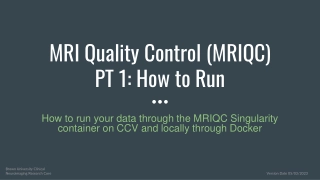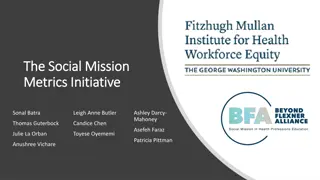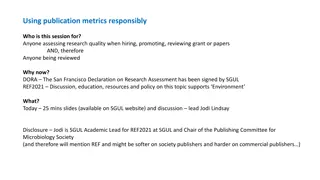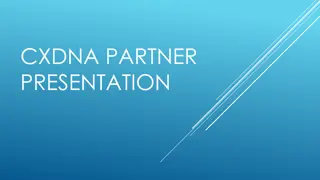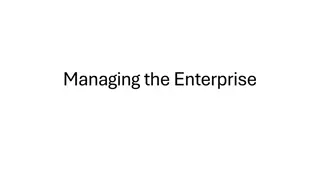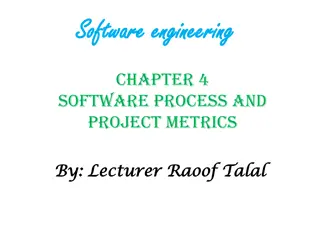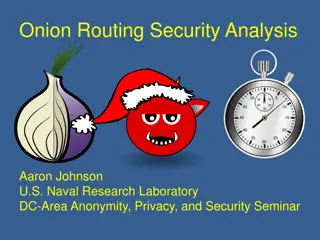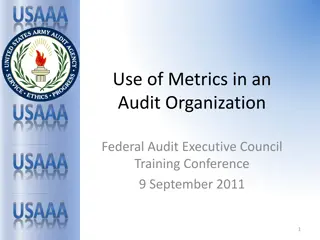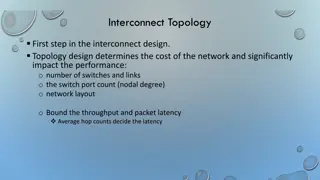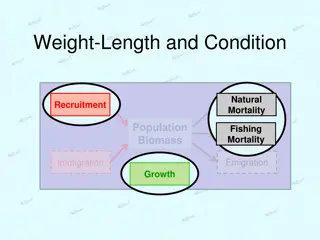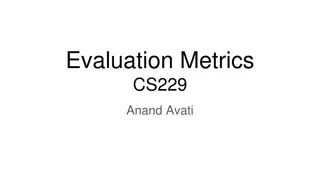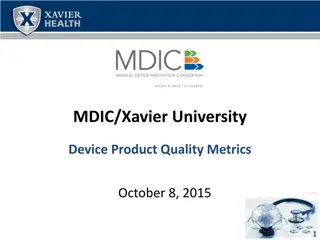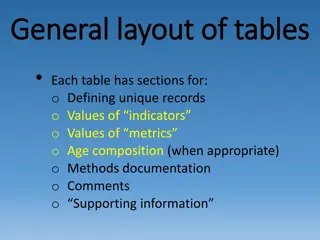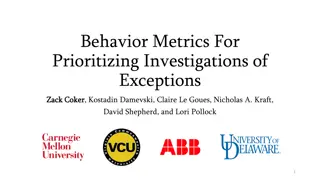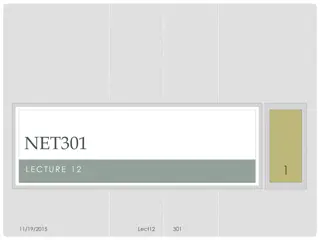Understanding Metrics for Research Impact Assessment
Metrics play a crucial role in assessing the academic impact of research outputs. They provide valuable indicators that need to be interpreted to enhance your research narrative. This overview covers generating, tracking, and measuring metrics with examples of tools and strategies for traditional and non-traditional scholarly publications. Learn about key metrics like h-index, citation counts, and journal impact factor, along with tools such as ORCiD, Scopus, and Altmetric.com for effective research evaluation.
Download Presentation

Please find below an Image/Link to download the presentation.
The content on the website is provided AS IS for your information and personal use only. It may not be sold, licensed, or shared on other websites without obtaining consent from the author. Download presentation by click this link. If you encounter any issues during the download, it is possible that the publisher has removed the file from their server.
E N D
Presentation Transcript
Metrics: a game of hide and seek Eleanor Colla Researcher Services Librarian
To cover Metrics overview Generating Tracking Measuring Part 1- theory Seeking Presenting Examples Resources Part 2- doing Part 3- casual chats Questions & Discussions
Metrics overview Metrics assist in assessing the academic impact of research outputs Metrics are an indicator that needs to be interpreted Metrics are numbers that can assist your research narrative
Generating metrics Publishing Public and Community engagement Consulting (industry) Radio and television appearances Community forums and public lectures Online engagement Blogs (academic, research, general) Social media Library can assist Strategic publishing Advice on online engagement Metrics consultations Articles Books & Book chapters Conference proceedings Policy reports Patents
Tracking metrics Main tools Other and emerging tools ORCiD lens.org Scopus PlumX Analytics Web of Science Publons Google Scholar Kudos OCLC WorldCat Impact Story Altmetric.com Dimensions Data
Measuring- types of metrics Traditional Scholarly publications in books and journals Track citation counts in other books and journals Track quality of the journal/book and publisher Formulates an h-index Non-traditional Scholarly-related outputs in different publication types (ie. grey literature) Track wider influence in scholarly areas and outputs Alternative Scholarly/ general outputs in non-scholarly publications Track the quantity- not the quality- of your impact and online presence Good for early career researchers and when there is a short turnaround between publication and metrics
Main index & citation tools for traditional metrics Benchmarking in InCites Reliable - Doesn t cover all disciplines 66 million+ records 18,000+ journals, books, conference proceedings Strongest coverage of natural sciences, health sciences, engineering, computer science, materials sciences Time period: Sciences: 1900- present Social Sciences: 1900- present A&H: 1975- present Proceedings: 1990- present Books: 2005- present Journal Impact Factor in Journal Citation Reports Web of Science Clarivate Analytics - Strong in the sciences ResearcherID Benchmarking in SciVal Reliable - Doesn t cover all disciplines 69 million records 22,000+ serials 14,000+ journals 150,000+ books Coverage: health sciences (32%), physical sciences (29%), social sciences (24%), life sciences (15%) Time period: SJR in SCImago Journal Ranking Scopus Back dated to 1970 Elsevier - Strong in the sciences Scopus AuthorID - Broader than WoS Analysis in Harzing s Publish or Perish Unreliable Covers most disciplines ??? ??? N/A Google Scholar Google Scholar Profile
Indexing scope Your research outputs Google Scholar Scopus Web of Science
Measuring- H-index h-index = number of papers with citation number greater than or equal to h Eg. The researcher would have an h-index of 8, as 8 articles have been cited at least 8 or more times, and the remaining articles have each been cited 8 times or less. Use with care: Citation patterns vary across disciplines, thus researchers in different disciplines cannot be compared Researchers in the same discipline at different career stages will have different h-index score
Measuring- journal quality Journal Impact Factor Based on articles, reports, and proceedings indexed in Web of Science Calculated by citations received in the year from articles, reviews and proceedings published in the previous 2 years SCImago Journal Ranking Based on articles, reports, and proceedings indexed in Scopus Calculated by citations received in the year from articles, reviews and proceedings published in the previous 3 years Australian Business Deans Council (ABDC) Journal Quality List Arts and Humanities Citation Index Journal List European Reference Index for the Humanities
Measuring- article level Assigned to papers in Scopus Many databases and publisher websites now show article metrics Number of views, downloads, and citations (PlumX, Altmetric.com, Mendeley downloads) Assigned to papers in Web of Science
Non-traditional metrics Government papers and policies Conferences and presentations Panels Scholarly websites and academic blogs (eg, The Conversation, LSE Blog) News articles Books in libraries (WorldCat.org, The European Library, COPAC) Awards received Patents (lens.org) Engagement through media (eg. radio programmes, podcasts)
Alternative metrics Social media (mentions, shares) Downloads Publons Altmetric.com (e-publications@UNE, ProQuest) PlumX analytic (Ebsco, Scopus)
Seeking the metrics a list of publications ORCiD ResearcherID (if applicable) Scopus Author ID (if applicable) Google Scholar profile (if applicable) Any other author IDs you are using (ResearchGate, Mendeley, Publons, etc) Any websites/projects/online presence you may have (Kudos, Impact Story, The Conversation, blog)
Presenting- Where Academic promotions CV/Resume Grant funding applications Two important points 1. Always cite your metrics Source Date 1. Always be able to provide proof of your claims Keep a folder of screencaptures
Metrics in grant applications and CVs Where applicable -Citation metrics taken from Google Scholar (GS), 03/04/2018. Citations include academic and grey literature and may include duplications. -Library holding metrics taken from OCLC WorldCat (WC), 03/04/2018, inclusive of all editions and type of resource -Please see glossary for terms with an asterix (*) Glossary Field Weighted Citation Impact (FWCI): A Scopus metric where a FWCI greater than 1.00 means the resource is more cited than expected based on: The year of publication Scholarly book chapters Author. (year). Title of chapter. In Ed Author (Eds.), Book title (pp). Place of publication: Publisher. GS citation = 10, WC = 357 libraries in 23 countries Document type, and The disciplines associated with its source Each discipline makes an equal contribution to the metric, which eliminates differences in research citation behaviour. Author. (year). Title of chapter. In Ed Author (Eds.), Book title (pp). Place of publication: Publisher. GS citation = 7, WC = 250 libraries in 30 countries, indexed in Web of Science Scimago Journal Rank (SJR): Calculated on articles, reports, and proceedings indexed in Scopus being cited in the previous 3 years Refereed journal articles Author. (year). Title of article, Title of Journal, V(Iss), pp. Doi: GS citation = 8, indexed in Scopus, Journal SJR (2017)- Q2 (Education) Author. (year). Title of article, Title of Journal, V(Iss), pp. Doi: GS citation = 15, indexed in Scopus, FWCI* = 2.00
Metrics in grant applications and CVs Overall Research Profile Within my research field, citations, a journal s impact factor, peer reviewed publications, and book holdings in libraries are all considered to be good indicators of research impact. All data were sourced on 03/04/2018. Where applicable the source has been named. Outputs (as of 03/04/2018) Total outputs:11: book chapters (5), books (3), refereed journal articles (3) Total citations: 45 (Google Scholar), 15 (Scopus), 7 (Web of Science) Field of Research Codes: FOR13 (7 publications), FOR22 (3 publications), FOR08 (2 publications) Overall, my research has a FWCI* of 1.75. I publish consistently in FOR13 where my FWCI is 2.00. This indicates that my research in FOR13 is performing twice above the world average for FOR13 indexed outputs between 2012-2017. (source: SciVal)
Metrics in grant applications and CVs Journal Quality My three refereed journal articles are all focused on the field of Education and all are indexed in Scopus. These journals are: Educational Policy (SJR*= 1.69, Quartile 1 in Education) Urban Education (SJR= 1.43, Quartile 1 in Education, Quartile 1 in Urban Studies) Quality in Higher Education (SJR= 0.61, Quartile 2 in Education). All data were sourced on 03/04/2018. Where applicable the source has been named. (source: Scimago) Book indexing Cumulatively, my three published books and three published book chapters, are held in 850 libraries across 53 countries (WC). Title A and Title B are indexed in Scopus with Title A having a citation count of 4 (Scopus) and 3 (Web of Science). Chapter Title A has been cited by 5 resources indexed in Web of Science. (data sourced on 03/04/2018)
Resources Leiden Manifesto for Research Metrics: http://www.leidenmanifesto.org/ Leiden Manifesto Video (4 30 ): https://vimeo.com/133683418 REF2014 Impact Case Studies: http://impact.ref.ac.uk/CaseStudies/Search1.aspx Metrics Toolkit: http://www.metrics-toolkit.org/
Three key messages Metrics should support, not supplant, expert judgement -The Metric Tide, 2015 http://www.hefce.ac.uk/media/HEFCE,2014/Content/Pubs/Independentresearch/2015/The,Metric,Ti de/2015_metric_tide.pdf Metrics: a game of hide and seek Cite your metrics!
Questions & Discussions Book an appointment with us: libraryresearch@une.edu.au


